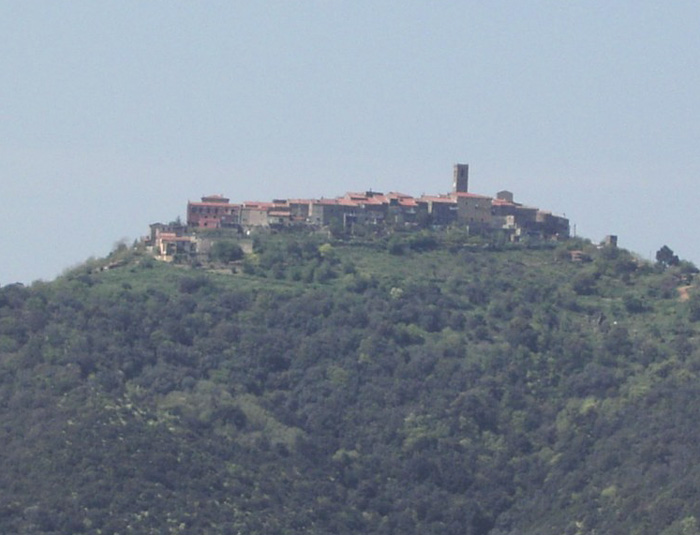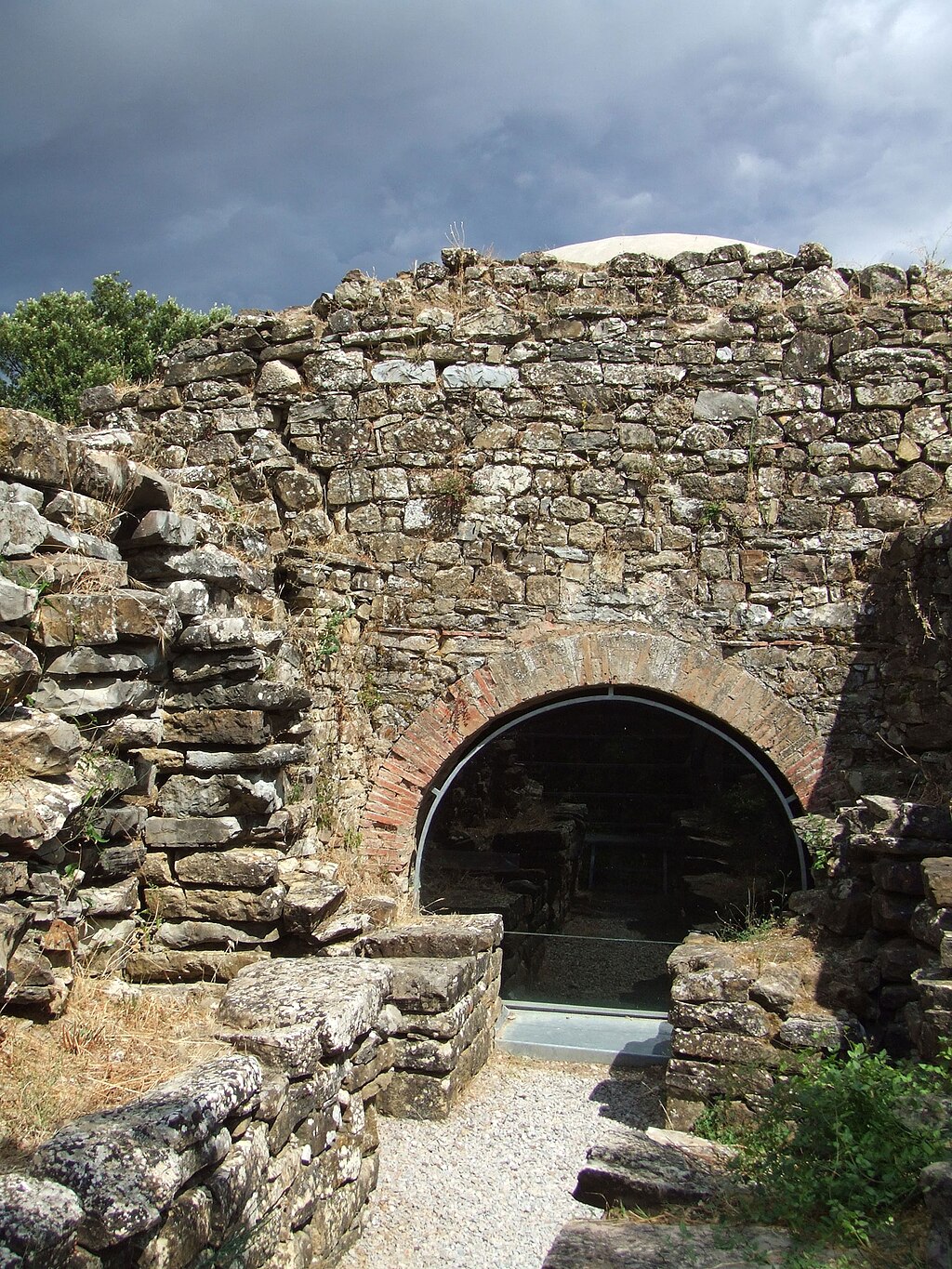 |
|
| I T | Vetulonia |
|
Of Villanovan origin (8th century B.C.), Vetulonia was one of the richest and most powerful metropolises in Etruria, as can be deduced from the remains of the boundary wall - still visible in part between two mediaeval towers (Mura dell'Arce) - as well as by the extraordinary extent and richness of its necropolises (Poggio alla Guardia, Poggio alle Birbe, Poggio al Bello, Colle Baroncio, Poggio Valli, Le Dupiane, Poggio Pelliccia). Particularly worth seeing are the tombs known as Pietrera and Diavolino II.
|
||
 |
||
Pietrera Vestibule, Entrance to the Pietrera Tomb, Tholos tomb, Etruscan civilisation, 7th century BCE.[3]
|
||
| In 1892, Isidoro Falchi found some statues inside the tomb of the Pietrera. As they date back to the second half of the seventh century B.C, they constitute one of the first examples of monumental sculpture known in Etruria. The specimens found, about twenty or so, are only fragments: the figures which have been best preserved are a female head and bust with her arms folded across her chest, and are now part of the collection of the Museo Archeologico (Archaeological Museum) of Florence. In spite of their fragmentary state, we can affirm that these sculptures in sandstone, almost life-sized, depict eight standing characters, men and women represented with costly clothing and with their arms folded across their chests in the customary ritual of mourning, to immortalize the ritual of the funerary mourning around the tomb. The rudimentary treatment of the posterior part of the statues leads us to believe that they were backed by a wall and therefore designed to be viewed only from the front: they cannot, therefore, be defined as free-standing statues. The rigidity of the moulding is contrasted by a chiselled working of the details: locks of hair which fall in curls, necklaces, a belt in relief which displays a decoration with two winged animals. This attention to detail reveals an influence of the minor arts: the statues testify the habit of repeating oriental models in the minor arts, already found on ivories and ceramics from the seventh century BCE. |
 Exterior view of the dome of the tomb of the Quarry (tumulo della Pietrera) Vetulonia[3] Veduta esterna della cupola della tomba della Cava (tumulo della Pietrera) Vetulonia |
|
| hjh | ||
| hjh | ||
 |
||
Model of tumulo della Pietrera Vetulonia in the museum museum Isidoro Falchi Modello di Tumulo della Pietrera Vetulonia nel museo museum Isidoro Falchi
|
||
Museo Civico Archeologico di Vetulonia "Isidoro Falchi"
|
||
[1] Tratto da "Parco degli Etruschi |www.parcodeglietruschi.it [2] The Sculptural Cycle of the tomb of Pietrera from Vetulonia (Grosseto) | www.ancientetruscan.blogspot.it [3] This illustration was made by louis-garden, licensed under the Creative Commons Attribution-Share Alike 3.0 Unported license. |
||||
Hidden secrets in Tuscany | Holiday home Podere Santa Pia |
||||
